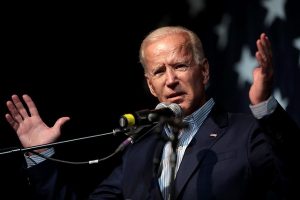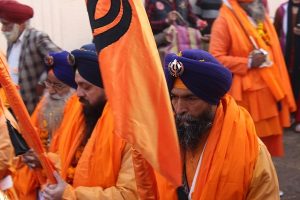Supreme Court Religion Cases – Battles Won, More to Come; Mass Graves at Religious Schools in Canada; How Religion Affected the 2020 Election; Government Measures Exacerbate India’s Religious Divide; Sikhs Come to Aid of COVID victims in India; Decline of Christians Slows
Supreme Court Religion Cases – Battles Won, More to Come
This past Supreme Court term, Religious Liberty triumphed for the most part. In Tanzin v. Tanvir justices ruled 8-0 in favor of Muslim men who were placed on the FBI’s no-fly list. As a result, people of faith will now be able to seek monetary damages from individual government employees. In Uzuegbunam v. Preczewski, Christian college students fought their school’s speech policy and justices ruled 8-1 that lawsuits can continue even after the government has abandoned the policy or behavior that prompted the suit. In Tandon v. Newsom, the court granted relief to houses of worship challenging the state of California’s lockdown rules and outlined a new approach to free exercise litigation. And in Fulton v. City of Philadelphia, justices unanimously ruled in favor of Catholic Social Services, enabling the faith-based foster care agency to continue partnering with the city despite the agency’s refusal to complete assessments of same-sex couples, saying the government cannot refuse to offer religious accommodations to laws when it’s willing to offer other types of exceptions. Next term, 10 more cases with religious implications are on the slate of cases, including a case from Maine in which parents are suing for tuition money for religious education.
Mass Graves Found at Religious Schools in Canada A Canadian Indigenous group said Wednesday a search using ground-penetrating radar has found 182 human remains in unmarked graves at a site near a former Catholic Church-run residential school that housed Indigenous children taken from their families. The latest discovery of graves near Cranbrook, British Columbia follows reports of similar findings at two other such church-run schools, one of more than 600 unmarked graves and another of 215 bodies. Cranbrook is 524 miles (843 kilometers) east of Vancouver. Currently government, religious and other sources of records are being sought to understand what happened.
A Canadian Indigenous group said Wednesday a search using ground-penetrating radar has found 182 human remains in unmarked graves at a site near a former Catholic Church-run residential school that housed Indigenous children taken from their families. The latest discovery of graves near Cranbrook, British Columbia follows reports of similar findings at two other such church-run schools, one of more than 600 unmarked graves and another of 215 bodies. Cranbrook is 524 miles (843 kilometers) east of Vancouver. Currently government, religious and other sources of records are being sought to understand what happened.
Government Measures Exacerbate India’s Religious Divide
India’s massive population is diverse as well as devout. Not only do most of the world’s Hindus, Jains and Sikhs live in India, but it also is home to one of the world’s largest Muslim populations and to millions of Christians and Buddhists. A major new Pew Research Center survey finds that Indians of all these religious backgrounds overwhelmingly say they are very free to practice their faiths and see religious tolerance as a central part of who they are as a nation. But members of India’s major religious communities often don’t feel they have much in common with one another, and the nation’s new citizenship act excludes Muslim immigrants from a smooth path to citizenship. .
How Religion Affected the 2020 Election

Gage Skidmore is licensed under CC BY-SA 2.0
Voters in 2020 sorted along religious lines in ways consistent with recent elections. Protestants constituted nearly half of all voters (46 percent), as they did in 2016. Within the Protestant tradition, White evangelicals accounted for 19 percent of all voters, but a much higher share of Trump’s voters (34 percent). Without such broad support for Trump among White evangelicals, Biden would have beaten him by more than 20 points. White non-evangelical Protestants voted for Trump over Biden by a 14-point margin (57 percent-43 percent), while Black Protestants were an overwhelmingly Democratic group (91 percent voted for Biden). Biden, by contrast, drew strong support from religiously unaffiliated voters – atheists, agnostics, and those who say their religion is “nothing in particular.” Together, these voters made up 25 percent of voters, which is a slightly larger share of the total electorate than White evangelicals (19 percent). But support for Biden among the unaffiliated was not quite as lopsided as Trump’s support among White evangelicals (a 45-point margin for Biden among the unaffiliated vs. a 69-point margin for Trump among White evangelicals). Without the religiously unaffiliated, Trump would have had a 9-point popular vote margin over Biden.
Sikhs Come to Aid of COVID victims in India As the United States begins to emerge from the COVID pandemic, India is in the midst of it. Sikhs are providing oxygen concentrators free of charge to many hospitals around the country. Sikhs have long held “langars” or kitchens offering free food, and now they are holding “oxygen langars,” as well.
As the United States begins to emerge from the COVID pandemic, India is in the midst of it. Sikhs are providing oxygen concentrators free of charge to many hospitals around the country. Sikhs have long held “langars” or kitchens offering free food, and now they are holding “oxygen langars,” as well.
Decline of Christians Slows The 2020 Census of American Religion conducted by the Public Religion Research Institute revealed that the decline of White Christians and the Rise of the religiously unaffiliated have both slowed. The survey was based on interviews with more than 500,000 respondents between 2013 and 2020, the census report reveals the shifting dynamics of American religious affiliation across geography, race and ethnicity, age, and political affiliation over the last decade. It provides the most detailed estimates of American religious affiliation since the U.S. Census Bureau last collected religious data in 1957.
The 2020 Census of American Religion conducted by the Public Religion Research Institute revealed that the decline of White Christians and the Rise of the religiously unaffiliated have both slowed. The survey was based on interviews with more than 500,000 respondents between 2013 and 2020, the census report reveals the shifting dynamics of American religious affiliation across geography, race and ethnicity, age, and political affiliation over the last decade. It provides the most detailed estimates of American religious affiliation since the U.S. Census Bureau last collected religious data in 1957.














 English
English French
French Spanish
Spanish German
German Dutch
Dutch Italian
Italian Danish
Danish Portuguese
Portuguese Greek
Greek Russian
Russian Swedish
Swedish Bulgarian
Bulgarian Hungarian
Hungarian Catalan
Catalan Ukrainian
Ukrainian Polish
Polish Basque
Basque Chinese (Simplified)
Chinese (Simplified) Japanese
Japanese Hebrew
Hebrew Arabic
Arabic Swahili
Swahili Amharic
Amharic Irish
Irish Afrikaans
Afrikaans Albanian
Albanian Armenian
Armenian Azerbaijani
Azerbaijani Belarusian
Belarusian Bengali
Bengali Bosnian
Bosnian Cebuano
Cebuano Chichewa
Chichewa Chinese (Traditional)
Chinese (Traditional) Corsican
Corsican Croatian
Croatian Czech
Czech Esperanto
Esperanto Estonian
Estonian Filipino
Filipino Finnish
Finnish Frisian
Frisian Galician
Galician Georgian
Georgian Gujarati
Gujarati Haitian Creole
Haitian Creole Hausa
Hausa Hawaiian
Hawaiian Hindi
Hindi Hmong
Hmong Icelandic
Icelandic Igbo
Igbo Indonesian
Indonesian Javanese
Javanese Kannada
Kannada Kazakh
Kazakh Khmer
Khmer Korean
Korean Kurdish (Kurmanji)
Kurdish (Kurmanji) Kyrgyz
Kyrgyz Lao
Lao Latin
Latin Latvian
Latvian Lithuanian
Lithuanian Luxembourgish
Luxembourgish Macedonian
Macedonian Malagasy
Malagasy Malay
Malay Malayalam
Malayalam Maltese
Maltese Maori
Maori Marathi
Marathi Mongolian
Mongolian Myanmar (Burmese)
Myanmar (Burmese) Nepali
Nepali Norwegian
Norwegian Pashto
Pashto Persian
Persian Punjabi
Punjabi Romanian
Romanian Samoan
Samoan Scottish Gaelic
Scottish Gaelic Serbian
Serbian Sesotho
Sesotho Shona
Shona Sindhi
Sindhi Sinhala
Sinhala Slovak
Slovak Slovenian
Slovenian Somali
Somali Sundanese
Sundanese Tajik
Tajik Tamil
Tamil Telugu
Telugu Thai
Thai Turkish
Turkish Urdu
Urdu Uzbek
Uzbek Vietnamese
Vietnamese Welsh
Welsh Xhosa
Xhosa Yiddish
Yiddish Yoruba
Yoruba Zulu
Zulu